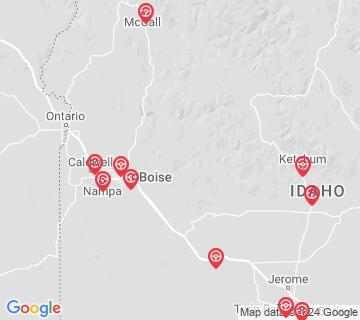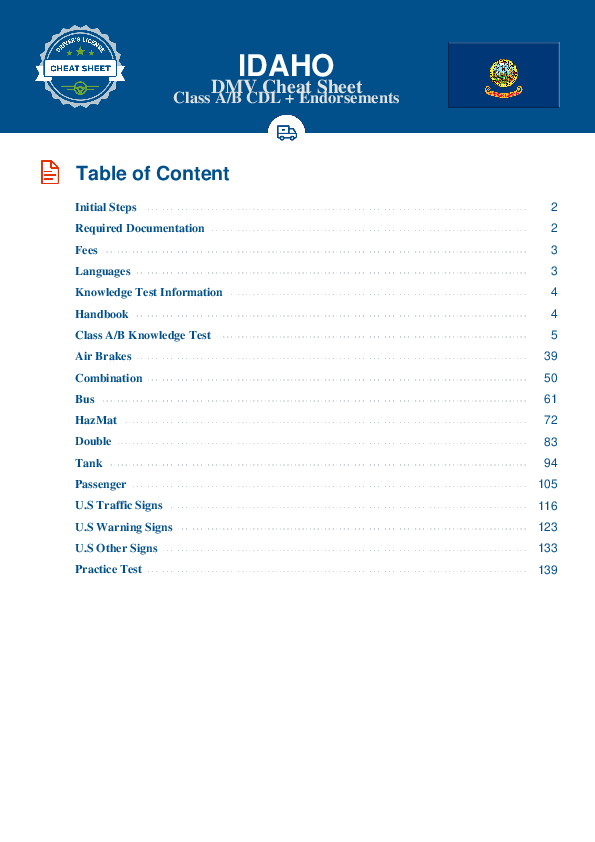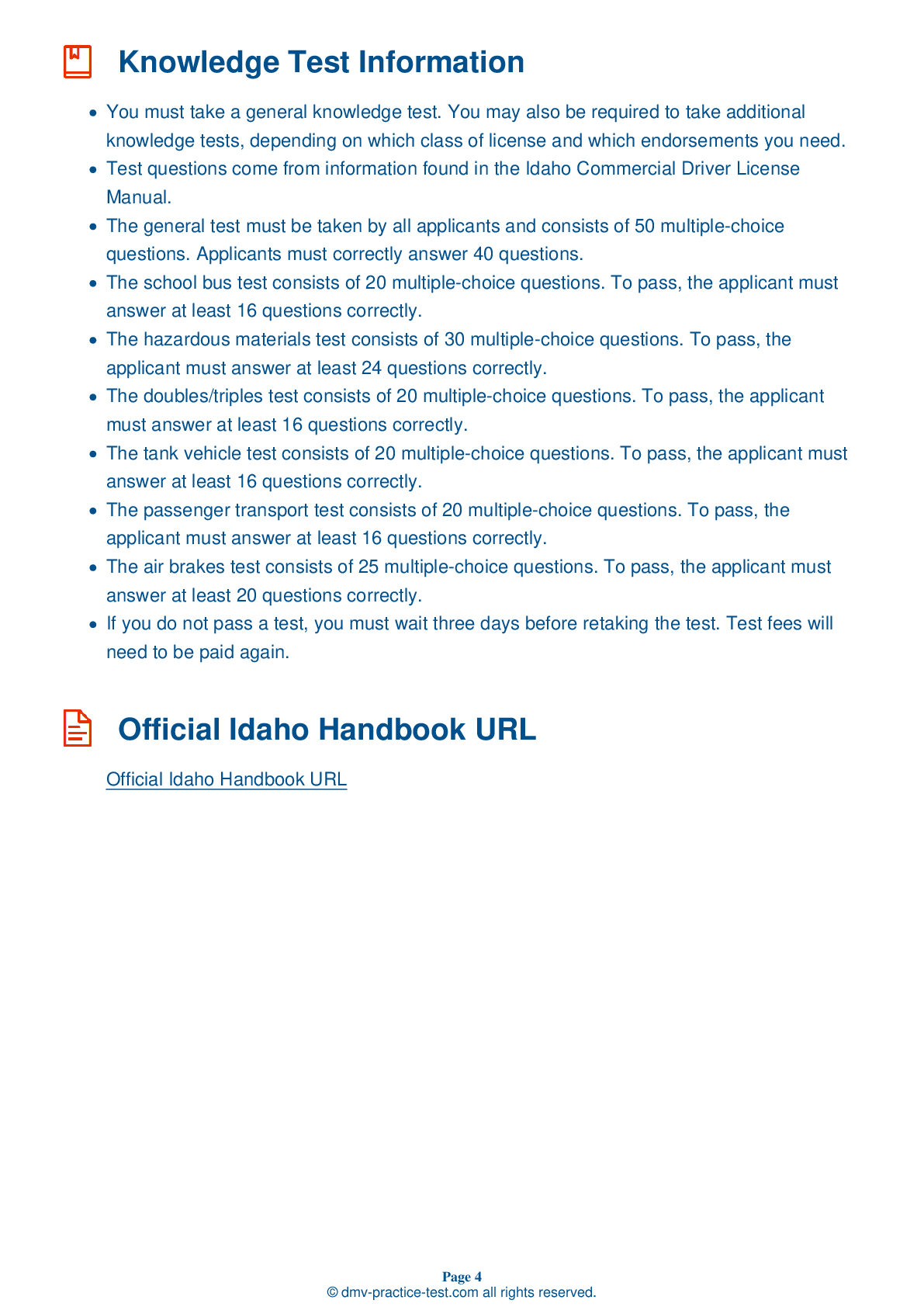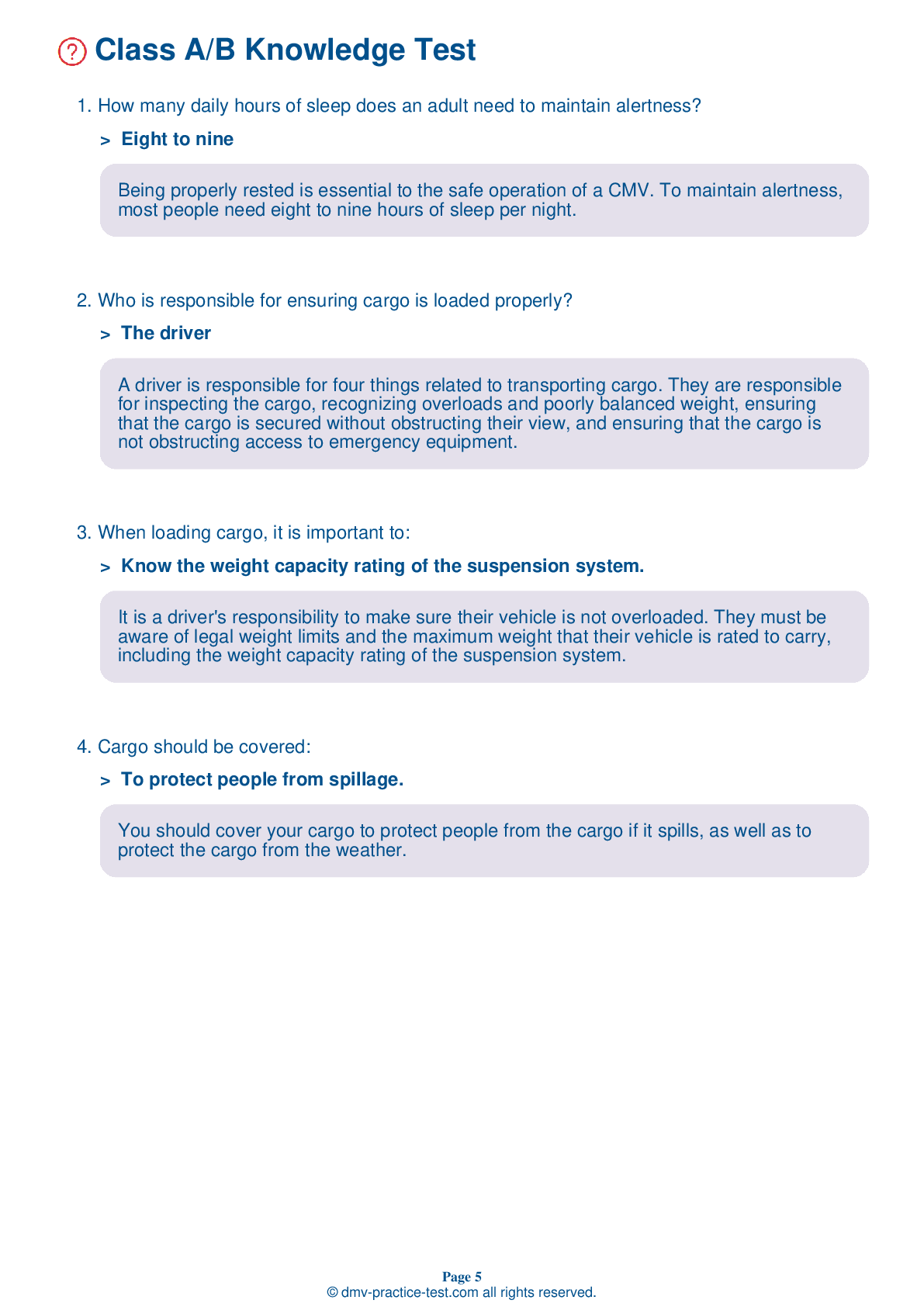Combination #1
Combination Vehicles Practice Test | Idaho 2025 #1 Page 2 of 3
Train for FREE online with our Idaho CDL combination vehicle test. The official exam test consists of several obligatory parts, with all of them checking your knowledge of different blocks of road rules. If you need to obtain a ID combination license in 2025, practice as much as possible. Free sample tests published on our website will help you check and improve your knowledge and boost your grades. Please bear in mind that DMV requirements for issuing a combination license may vary from state to state.
20
16
20
8 . When a combination vehicle goes around a corner:
When a vehicle goes around a corner, the rear wheels follow a different path than the front wheels. This is called off-tracking. This effect is especially pronounced on vehicles with trailers.
9 . Pushing in the trailer air supply control will:
Push in the trailer air supply control to supply the trailer with air. Pull out the trailer air supply control to turn off the air supply and activate the emergency brakes.
10 . When coupling, you should:
When coupling air brake hoses, you should make sure the proper pairs of gland hands are connected. They are sometimes color-coded to help drivers avoid mistakes. Typically, blue is used for service lines and red is used for emergency lines.
11 . The trailer hand valve should be used:
The trailer hand valve (also referred to as the "trolley valve" or "Johnson bar") works the trailer brakes and should be used only when testing them. Using the trailer hand valve while driving could result in a skid.
12 . When should the trailer hand valve be used?
The trailer hand valve, also called the trolley valve or Johnson bar, is used to work the trailer brakes. It should be used only to test the brakes. Using it while a vehicle is in motion could cause a skid.
13 . Combination vehicles:
Driving combination vehicles requires more skill than driving single commercial vehicles. Combinations are generally longer, generally heavier, and are more vulnerable to rollover.
14 . Rearward amplification refers to:
The "crack-the-whip" effect is a result of rearward amplification. If not properly handled, a trailer can tip over due to rearward amplification.
Search the best driving school in your neighbourhood
2025 Idaho | Frequently Asked Questions
To acquire a CDL Hazmat endorsement in Idaho, you must first possess a valid Idaho Commercial Driver's License (CDL). After that, you will need to pass the Hazardous Materials Endorsement Knowledge Test. Lastly, you should complete a federal security threat assessment application, provide fingerprints, and pass an FBI background check. The endorsement will be added to your CDL once approved.
To obtain a CDL Hazmat license, you must first have a valid Commercial Driver's License (CDL). You must be at least 21 years old and be able to read and speak English. You also need to pass a physical examination every two years. Lastly, you must pass the Hazardous Materials Endorsement Knowledge Test and an FBI background check.
When applying for a CDL Hazmat endorsement, you need to provide proof of U.S. citizenship or legal status, such as a birth certificate or passport. You also need your current Commercial Driver's License (CDL), proof of Idaho residency, and your Social Security Number. Finally, you'll need to complete a federal security threat assessment application and provide fingerprints for an FBI background check.
Yes, there is a dedicated written test for the CDL Hazmat endorsement in Idaho. This test assesses your knowledge on transporting hazardous materials safely. It covers topics such as loading and unloading, bulk packaging marking, driving and parking rules, and emergency response procedures. The Idaho Commercial Driver’s License Manual is a great resource to prepare for this test.
The written test for the CDL Hazmat endorsement covers a wide range of topics related to hazardous materials. These include identifying different types of hazardous materials, understanding shipping papers, placarding rules, loading and unloading procedures, handling emergencies and incidents, and understanding the associated risks and safety precautions when transporting hazardous materials.
Yes, obtaining a CDL Hazmat endorsement in Idaho involves extra charges. You'll need to pay a fee for the knowledge test, and there's also a fee for the endorsement itself. Additionally, the TSA background check carries a separate fee. The exact costs can vary, so it's recommended to check the current fees with your local DMV office or on their website.
Yes, to obtain a Hazmat endorsement in Idaho, the Transportation Security Administration (TSA) requires a federal background check and fingerprinting. This is to ensure the driver doesn't pose a security threat. The applicant must be a U.S. citizen or have legal status, and must not have committed certain crimes.
Yes, specialized training is required for a CDL Hazmat endorsement. Applicants must pass a written test on federal and state regulations for transporting hazardous materials. While it's not mandatory, many opt for professional training programs to prepare. After passing the test, a TSA background check is also required before the endorsement is granted.
No, you cannot legally transport hazardous materials without a valid CDL Hazmat endorsement in Idaho. The endorsement ensures that drivers are trained and equipped to handle hazardous materials safely. Violating this requirement can lead to severe penalties, including fines and suspension or revocation of your commercial driver's license.
Yes, you can add the CDL Hazmat endorsement to your current CDL license. It doesn't require a new application for a CDL, but it does require passing a written test specific to Hazmat transportation, as well as a TSA background check. Once these are successfully completed, the Hazmat endorsement can be added to your existing CDL.




